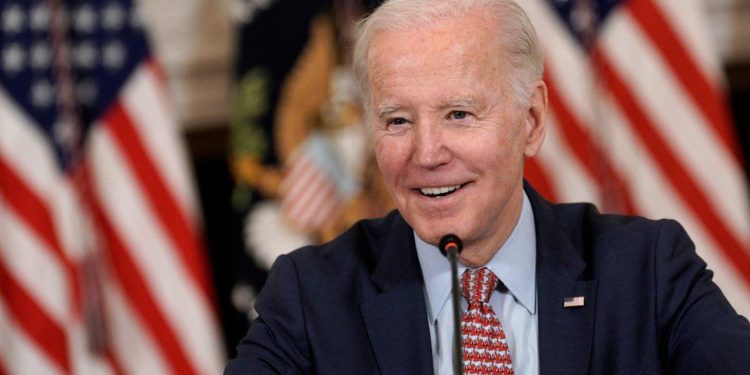Although they have taken grandpa’s car keys, he still retains the nuclear codes. If you ever find yourself in the same room as the U.S. president, look for the military officer carrying “the football.” This term refers to the briefcase carried by one of the president’s military aides, which must always remain close to the commander-in-chief. It doesn’t contain a big red button, but it holds the tools necessary for the president to launch a nuclear strike, communicate with the Pentagon and the situation room, and access other highly classified assets.
In essence, the entire U.S. command-and-control system depends on a commander-in-chief who can be in command at any moment, day or night. President Joe Biden’s regrettable infirmities, which were dismissed as right-wing conspiracy theories just weeks ago, have now been revealed to the world. Most Americans have seen for themselves that the president is too old and too enfeebled to do the job.
Our enemies also know that America’s commander-in-chief is no longer at the wheel, if he ever truly helmed our ship of state. Events such as the secretary of defense disappearing for days on end earlier this year suddenly make more sense. Why check in with a boss who has clearly checked out?
Fortunately, America’s chain of command remains intact—the U.S. military has the discipline and resolve to weather the absence of a leader who gets tired after 4 p.m., as has been widely reported about Biden. However, our enemies detect weakness at the very top of the command structure. Will they act in the next five and a half months while a very lame duck finishes his term?
This crisis of command comes as the U.S. navigates a dangerous period. A mere week separated two major American events: the assassination attempt on former President Donald Trump and a surprise Sunday announcement that Biden is no longer seeking the presidency. Both could have significant implications for the future of the country.
Trump’s young assassin came millimeters from changing the election and country. It’s easy to imagine what might have happened had Trump not turned his head to look at an immigration chart. During another warm summer 110 years ago, a young, skinny assassin, Gavrilo Princip, hit his mark and triggered World War I.
Thank heavens Thomas Matthew Crooks missed. But the attack against Trump still holds major ramifications—lawmakers across the spectrum want answers.
This summer’s other major event was the resignation from the campaign via X of a sitting president. Taken together, these eight days could have turned out quite differently: America might have had no frontrunners in this year’s election, leading to internal fighting of the roughest kind. That’s the sort of trigger crisis Neil Howe wrote about in his important 2023 book, “The Fourth Turning is Here.” Howe explains that such crises often spark enormous changes to the course of history.
And what would America’s enemies have done in such a scenario? Here too, history holds a clue. By the fifth century, the Roman Empire was weak and struggling with internal political fights, economic uncertainty, and an ineffective string of emperors. As the Roman government was distracted by corruption and power struggles, the Visigoths, led by King Alaric, sacked Rome in 410 A.D.
By that guide, the remaining five and a half months of Biden’s presidency are likely the most dangerous in recent U.S. history.
 Telegram is where we really talk. Don't miss out!
Telegram is where we really talk. Don't miss out!








